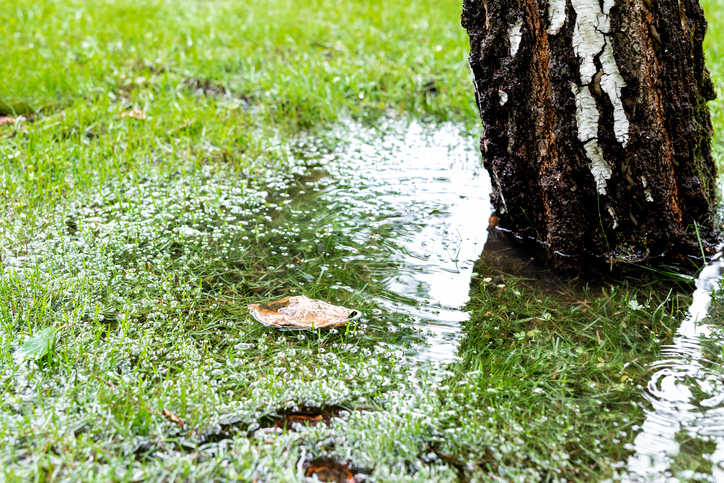When it comes to watering their lawns during hot days of summer, many homeowners may think that setting their drip irrigation or sprinkler system to turn on once or twice a week and give it a good soaking is enough. Because the eye can see that the sun is blazing, and your park-like lawn will surely turn brown if you don’t water heavily and frequently.
But what the eye can’t see is even more important, and that’s how much moisture may already be embedded in the soil deep beneath the ground surface around the root system of your lawn. If the soil down there is already wet enough, you could be overwatering your grass, which will actually do more harm than good.
However, you don’t want to underwater your lawn either. So how are you to know if the soil deep down is already moist enough, other than pushing a screwdriver six inches down into the soil around the entire expanse of your lawn to see where it comes up moist or dry?
That’s where soil moisture sensors will save the day for you, and more importantly your lawn! Soil moisture sensors will let you know how wet or dry the soil is beneath the root system of your lawn, as well as just how much water your grass actually needs in real time.
How much water your lawn requires will depend on the type of soil it’s growing in. Because water absorption will vary, depending on the texture and structure of different soils. Heavy clay soils have small pore space, which allows for greater water holding capacity. By contrast, sandy soils have large pore space and drain quickly, retaining way less water.
When pore spaces fill up and become saturated, excess water will drain, leaving soil at field capacity- the amount of water content held in soil, usually 2-3 days after rain or irrigation.

Overwatering will cause soil to stay waterlogged and prevent your lawn from drawing up valuable nutrients. Oversaturation is also the perfect breeding ground for fungal diseases, insects and weeds. Here’s where soil moisture sensors can prevent that from happening.
Buried deep beneath your lawn and wired into your cloud-based Smart Irrigation Controller- which is monitoring real time weather conditions for your irrigation system- soil moisture sensors will accurately read and measure volumetric soil moisture and changes deep beneath the root system of your lawn. Providing readings within 3% of actual soil moisture content, these sensitive tools will transmit data for the best possible irrigation decisions from your cloud-based Smart Irrigation Controller. This not only reduces water use of up to 62 percent in a typical irrigation system, but will result in deeper root systems for healthier lawns.

